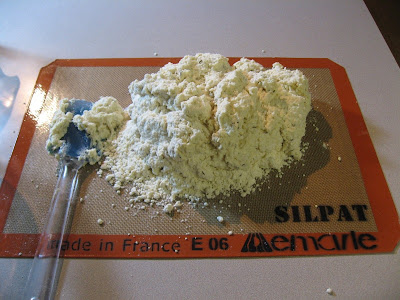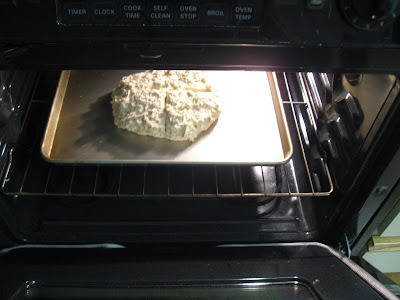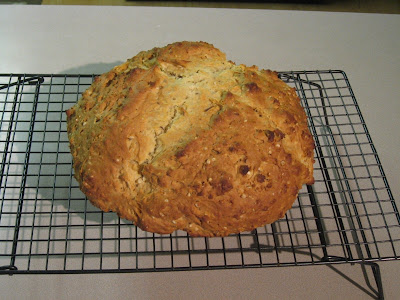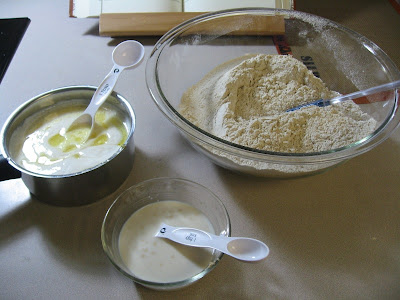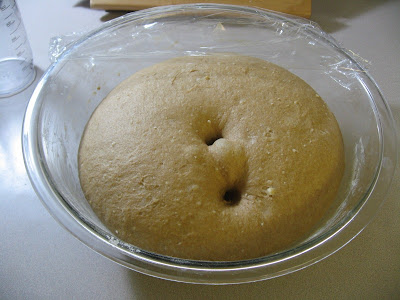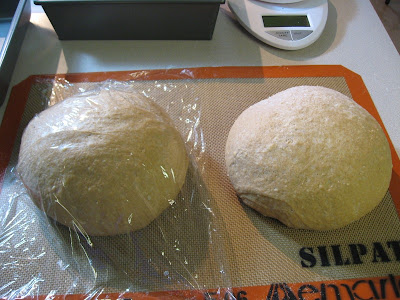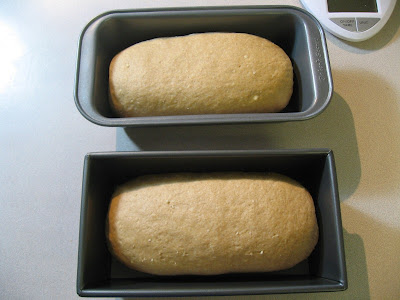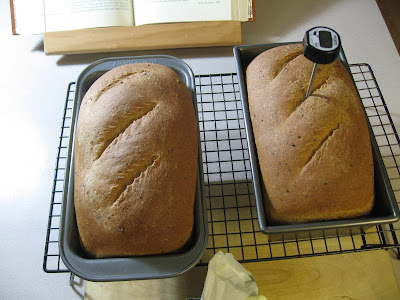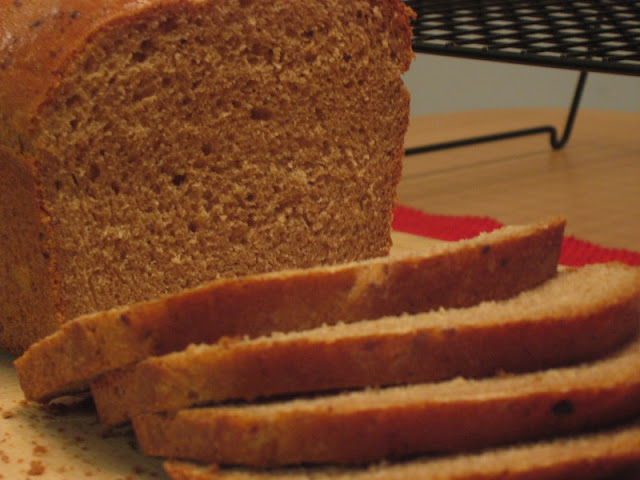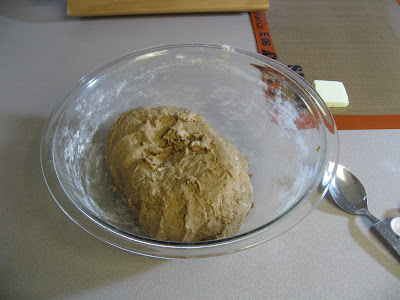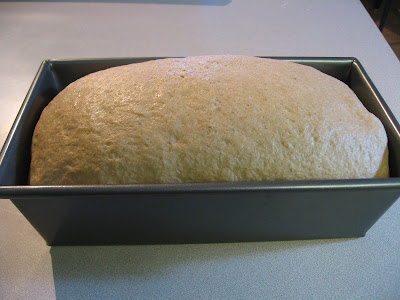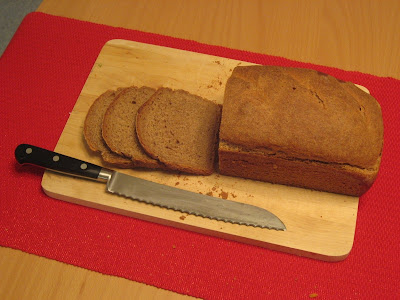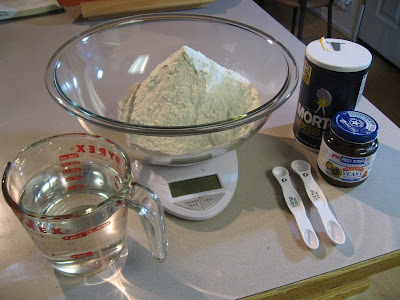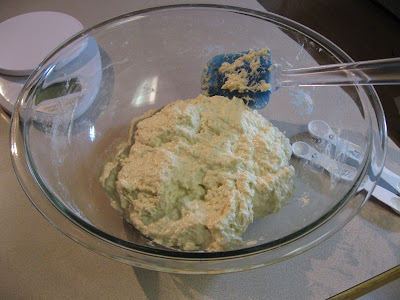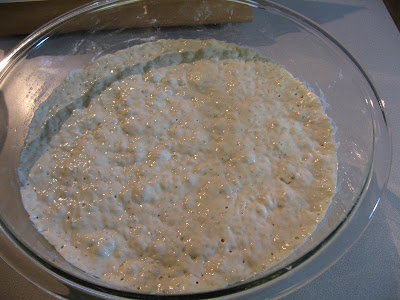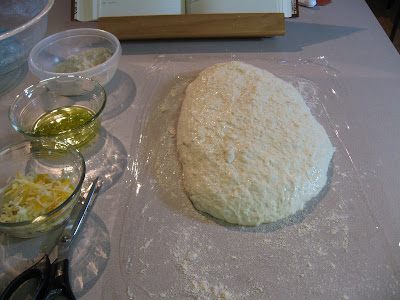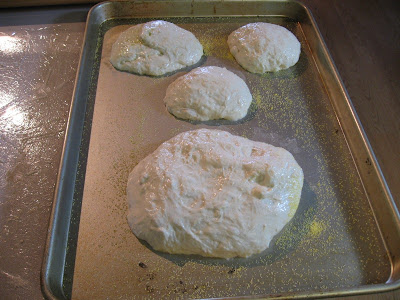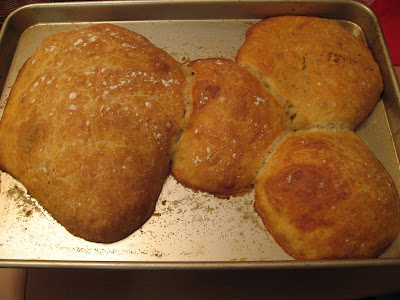This bread was inspired by the Naturally Sweet Wheat Bread recipe from the 'King Arthur Flour Whole Grain Baking: Delicious Recipes Using Nutritious Whole Grains' book. However it included more bread flour than I wanted to use, so I decided to try some modifications. I don't think it all worked well, the end result was decent and I would want to try this again with some more changes. Because I changed this recipe quite a bit, I think I need to write out the changes.
The recipe
| Original recipe | RPH version |
| 2 T orange juice 2 T water 2 T vegetable oil 1 T honey ¼C (1.5 oz) raisins 2 T (1 oz) packed brown sugar | Same as original except I only used 1 T brown sugar |
| ¾ C lukewarm milk | ¾ C lukewarm milk |
| 1¼ C (5 g) whole wheat flour ¾ C (2¾ oz) medium or white rye flour 1½ C (6.375 oz) unbleached bread flour | 4.4 oz whole wheat (the last of the bag) 2.8 oz rye flour 3.45 bread flour 3 oz barley flour 0.25 oz ground flaxseed 0.20 oz vital wheat gluten |
| 1½ t salt 2 t instant yeast | 1½ t salt 2 t instant yeast |
| C = cup T = tablespoon t = teaspoon g = grams | - |
My flour measure was a tad short of the original recipe. Barley has significantly less protein content than bread flour, so I tried to to make up for it with some vital wheat gluten. I should have probably added some more, but I didn't want to make the bread too chewy.
 |
| Lots of ingredients in this bread |
The ingredients from the first row in the table above are ground together until the raisins blend in. I didn't do a very good job so I had several biggish pieces of raisins left. I think it added interest in the final result. The flours, salt and instant yeast are mixed in a bowl.
 |
| Milk, flours + salt+ yeast and liquid measure |
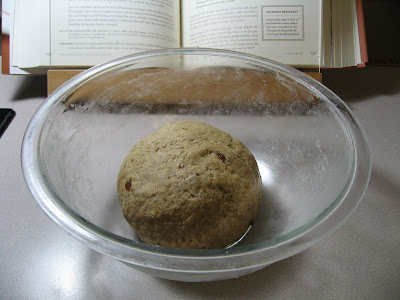 |
| After mixing together and kneading for about 10 minutes |
 |
| Decent rise after a long first rise |
Second rise
The recipe did not suggest a second rise, but because I was using more whole grain flours, I decided to do a second rise to give the flavors time to develop.
 |
| Deflated, rounded and ready for a second rise |
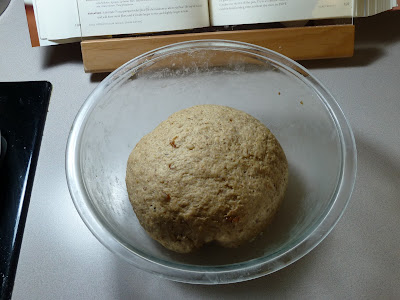 |
| Not a significant second rise |
Shaping and proofing
The dough filled the pan quite a bit less than my doughs usually do. Probably because 14ish oz of flour is less than usual and also because the dough hadn't risen much. After an hour and 45 minutes I thought it was time to go in the oven.
 |
| Shaped to a very small loaf |
 |
| Barely filling the pan and not risen above the rim |
 |
| Slashed and ready for the oven |
The bread
There was practically no oven spring. The bread sliced well. The crumb was fairly dense. The best part was the interesting taste of wheat, rye and barley. This bread was on the sweeter side and I am glad I used 1 T less brown sugar. Next time I would completely skip it. The bread was more suitable for nut butters and marmalade than savory sandwiches. We did have it with egg salad sandwich once and it didn't fall apart.
 |
| Tiny loaf is out of the oven and brushed with butter |
 |
| Sliced well and thin |
 |
| Slices |
 |
| Decent crumb with distinct flecks of raisins |
Notes
Date: Mar 20, 2011
Recipe: Naturally Sweet Wheat Bread from 'King Arthur Flour Whole Grain Baking: Delicious Recipes Using Nutritious Whole Grains'
Flours: Whole wheat, rye, barley, bread flour
Bread specific ingredients: Raisins, orange juice, vegetable oil
Sweetener used: Light brown sugar, raisins, honey
Liquid: Milk
First rise time: 2 hours and 35 minutes
Second rise time: 90 minutes
Proofing time: 1 hour and 45 minutes
Comments: Not too bad for not following the recipe. I should try adding more vital wheat gluten when replacing bread flour with barley (or rye). I should probably have also added a little more liquid and made a slightly wetter dough. Barley flour probably absorbs more liquid than bread flour does. I felt it was very stiff as I kneaded but thought it would soften during the first/second rise. I should know better than that by now. The bread could also use less sweetener. Of course, then I would have to change it's name.
-RPH

